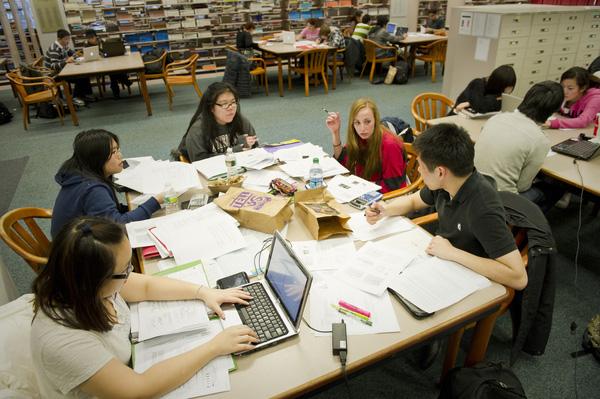A redesign for Snell Library’s study space

Snell Library welcomes nearly 2 million visitors per year, many of whom study inside the building, where collections include hundreds of thousands of books, periodicals and multimedia materials.
Will Wakeling, dean of University Libraries, said that many students affectionately refer to the study space as “Club Snell.”
“We take very seriously the role of the library not only as a source for research support through scholarly materials, collections and services,” he explained, “but also as a place where students can work together to create new knowledge and an environment for quiet, individual scholarship.”
The library, Wakeling said, is in the process of implementing a broad vision, which includes a shift of emphasis away from print materials toward its digital collections of online e-books, journals and periodicals. The shift, he said, would free up more study space, noting that “The library is committed to creating a flexible and rich environment for users who see Snell as central to their academic experience.”
Keeping in line with its academic mission, the University Libraries conducted its latest user feedback exercise this April, a survey asking students about their preferences for study space, equipment and furniture. Nearly 1,000 students completed the survey in print or online through the library’s Facebook and Twitter channels.
The findings served as the catalyst for a series of ongoing improvements to the building’s study space and underscored a popular refrain among students that Snell is a home away from home. Sixty-three percent of students surveyed, for example, indicated that they study individually in the library more than once per week.
The plurality of students surveyed asked for two things: more tables and more outlets in which to plug in laptops and smartphones. They also asked for more comfortable chairs and more printers in both the library and throughout campus.
Students indicated a preference for smaller tables over desks for individual study sessions and additional larger tables for group meetings. As a first response, the library began an installation project to add hundreds of new outlets, which will be available for the fall 2012 semester. The goal of the outlet installation project is to ensure that each student has access to power for his or her electronic devices.
“We must always keep an ear open to what the university community needs and then respond appropriately,” Wakeling said. “Meeting those needs is the best way to provide users with a space that they feel is their own.”





